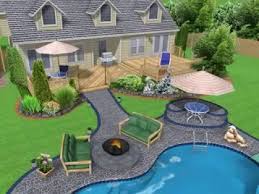 Back yards are increasingly becoming extensions of indoor living spaces. Homeowners are more than willing to invest in, indeed indulge in, a sumptuous outdoor living space so long as it is eco-friendly. In fact, the average deck addition now costs more than $10,000. For garden centers and nurseries, this turn toward the extravagant can lead to higher profits and better business, but only if they offer their customers the right materials and options. Here are few of the most popular trends in backyard projects and the materials that make them possible.
Back yards are increasingly becoming extensions of indoor living spaces. Homeowners are more than willing to invest in, indeed indulge in, a sumptuous outdoor living space so long as it is eco-friendly. In fact, the average deck addition now costs more than $10,000. For garden centers and nurseries, this turn toward the extravagant can lead to higher profits and better business, but only if they offer their customers the right materials and options. Here are few of the most popular trends in backyard projects and the materials that make them possible.
Native Planting
As people have become increasingly conscientious of the impact they have on the environment around them, the use of native flora and fauna in building a backyard oasis has skyrocketed. Native plants offer a host of benefits including better resistance to pests, improved tolerance of drought conditions, and decreased fertilizer requirements.
For nurseries, there are advantages to selling native plants as well. They require less maintenance, are easier to source from local growers (buying local is another major trend among consumers), and are often resistant enough to weather fluctuations that they allow for extended sales seasons. The biggest drawback, however, is diversity. Selling strictly native plants can reduce options in terms of bloom times, bloom size, color varieties, and so forth. To really capitalize on the use of native plants, it may be necessary for nurseries to get creative in how they display, promote, and accessorize their plants. Of particular interest to homeowners are native plants that attract pollinators. Such plants are in high demand not only because they smell and look great, but because they help boost yields among the edible plants that are increasingly found in landscapes.
Edible Planting
One way for a nursery to boost the number of native plants that it can offer is to start selling edible plants for landscapes. The use of edible plants in landscaping is a burgeoning trend in the United States, with homeowners replacing lawn and hardscape with edibles in order to reduce maintenance requirements and their shopping bills. Because many edible plants produce flowers and attract pollinators and birds, they are prefect additions to many landscape designs. This is especially true when considering fruit-bearing plants, like blueberries and raspberries, which the homeowner can consume or leave for the critters.
If you plan to sell edible plants, be certain to provide all of the materials a homeowner will need to care for these plants. In particular, invest time and energy into learning about natural pest control options for weeds, insects, and larger animals that live in your area. Homeowners want to have their cake and eat it too when it comes to edibles, which means that they want to have great yields and low crop loss without resorting to harsh pesticides and chemical deterrents.
Sustainable, Natural Furniture and Hardscapes
One great way for any nursery to boost sales is to expand beyond plants to offer everything from landscape stones to furniture. As with trends in landscaping, the trend with hardscape elements is toward environmental stewardship. The good news is that people don’t mind paying for sustainable furniture and hardscape. In fact, the trend in outdoor living is toward quality over quantity. Homeowners would much rather have a single piece of high-priced, sustainably produced, natural furniture than multiple pieces of low quality plastic furniture that isn’t so great for the environment.
It is important to note that outdoor living areas are no longer limited to just seats and a table. People are installing hot tubs, pools with sunken seating, natural stone fireplaces, wall gardens, saunas, and expensive lighting systems. Nurseries looking to capitalize on any or all of these trends may find it beneficial to partner with other businesses (e.g. pool installation companies) to help provide their customers with integrated shopping and installation solutions.
The Overarching Trend
The overall theme for outdoor living spaces is sustainability. Homeowners want to have beautiful gardens and comfortable outdoor living areas that don’t come at the cost of biodiversity and that don’t contribute to environmental degradation. For nurseries, capitalizing on this trend is not only good business, but good stewardship as well.
Resources
http://www.fortunebuilders.com
http://www.fortunebuilders.com
http://www.bringingnaturehome.net
http://www.hgtv.com
http://www.hardwareretailing.com
http://freshome.com
